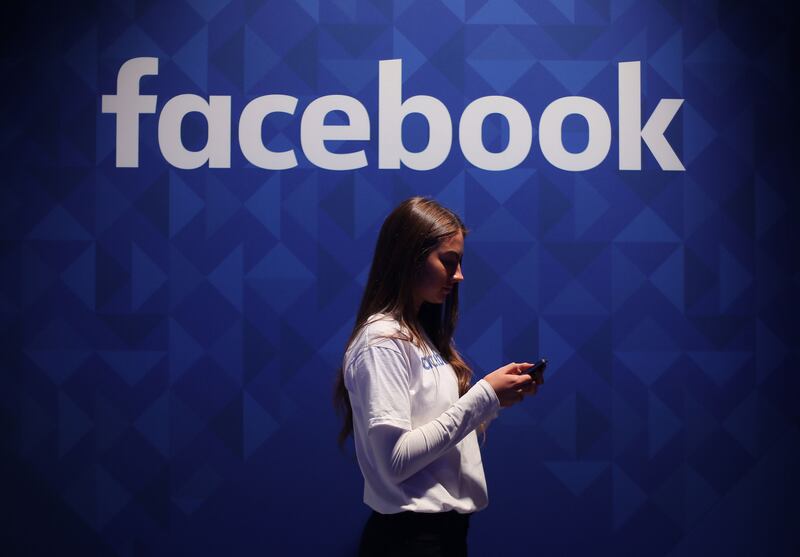The Sync Digital Wellbeing Summit was held last week in Saudi Arabia. Attendees gathered from around the globe at the King Abdulaziz Centre for World Culture (Ithra) in Dhahran. Summit speakers included scientist and inventor Gitanjali Rao, Time magazine's first-ever Kid of the Year, Netflix co-founder Marc Randolph, best-selling author Simon Sinek and many more. Attendees, from government ministers to tech CEOs, psychiatrists to computer scientists, were all clear on one thing: digital is a force for global good, but we desperately need to pay attention to some of tech's negative consequences, too.
The dark side of digital includes the development of compulsive or addiction-like behaviours among social media users and online gamers. A tiny minority of users exhibit behaviour extreme enough to warrant clinical attention. This minority might face social and familial relationship problems due to technology use. Their behaviours may also adversely impact their education or employment. In some cases, the individual cannot bring the behaviour under control, trying but failing, experiencing relapse after relapse.
There are currently around 4.45 billion active social media users globally. So, if even a tiny percentage (1 per cent) develop problematic use, that is a lot of affected individuals (44 million). This issue is a growing concern, especially as the time we spend on social media continues to increase, rising from an average of 90 minutes per day in 2012 to 145 minutes as of 2021.
There is also compelling evidence of a link between problematic social media use and mental health issues such as depression and anxiety, as well as attention-deficit and eating disorders. Physical health is also impacted, with digital technology associated with sleep inconsistency and poorer sleep quality. Additionally, one of the leading causes of road traffic accidents in some nations is distracted driving, with mobile phone messaging cited as the number one distraction.
These issues and more, frequently emphasising children and young adults, were discussed at the summit. The child focus is because we still don't fully understand the implications of digital technology on developing minds. We now have a generation of young adults who have grown up as digital natives, those who replaced teddy bears with iPads. So what impact does social media use have on the emotional and cognitive development of a 12-year-old?

A study published last week in Nature Communications highlights the possible age-related adverse consequences of social media use, especially among girls. This one-year follow-up study found that the more time girls aged between 11 and 13 spent on social media, the less likely they were to be satisfied with life a year later. What about two years later, or three? We simply don't know yet.
In his State of the Union Address last month, US President Joe Biden also expressed his concerns about the impact of tech on children. Mr Biden suggested that it was time to "hold social media platforms accountable for the national experiment they're conducting on our children for profit". I contend the experiment is more global than national. Mr Biden also mentioned strengthening online privacy protections and banning targeted advertising to children.
Whose responsibility is it to protect us from the potential pitfalls of digital? This was a critical debate at the summit, with several speakers arguing vehemently and eloquently for personal responsibility. We need to be self-disciplined; we can choose to turn off notifications and leave phones in our bags when we are out with friends. With a bit of effort, we can transform the way we use digital technology so that it adds to life rather than distract us from it.
Other speakers, however, argued equally convincingly for more effective government regulations. Examples included prohibiting micro-targeted advertising and allowing people to opt out of AI-curated content suggestions. There were also calls to prevent gaming and social media platforms from using the psychology-based design techniques that make them so irresistibly sticky and engaging.
Personal responsibility, government regulation and even tech-industry self-regulation are not mutually exclusive. So the best way forward is to focus on all three. Ultimately, the summit generated actionable recommendations that included personal, legislative and industry-based activity. There was also a focus on problem prevention and addressing the many knowledge gaps that persist.
The summit, of course, did not just focus on the problematic side of technology use. There were also many sessions celebrating the diverse ways that digital technology helps promote wellbeing. For example, there was an exploration of how virtual reality can help people with social anxiety disorder, especially those who stammer.
There was even a deep dive into how social media and gaming can be healthy and growth-promoting. A broad point of agreement was that it is not necessarily about how much time we spend on digital technologies. Instead, the benefits and problems seem to arise from how and why we use them.
The challenge of promoting digital wellbeing in an increasingly digital world requires urgent and sustained attention. As individuals, we need to take stock of our digital habits. However, governments, employers, and the tech industry must be actively involved, too, if we are to engineer an online world where people can easily flourish and thrive.





